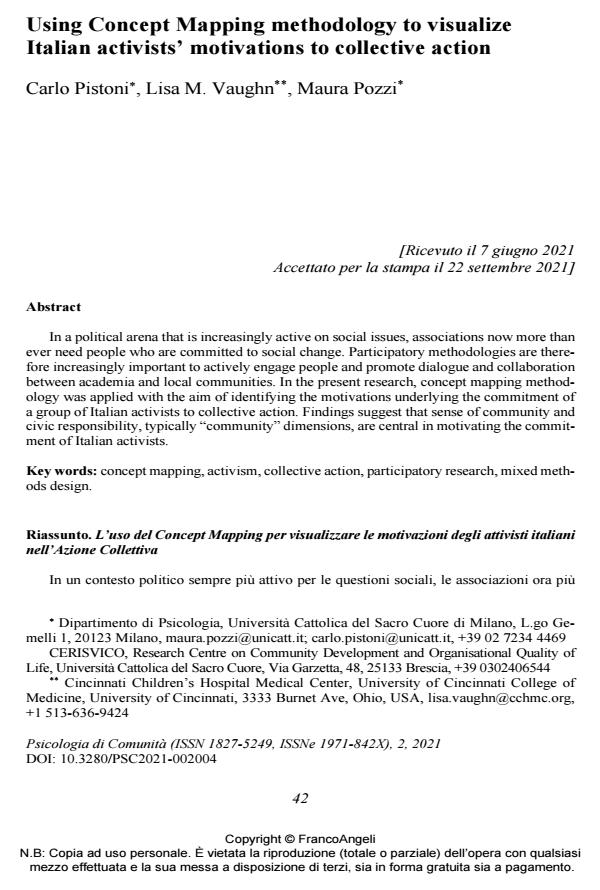Using Concept Mapping methodology to visualize Italian activists’ motivations to collective action
Journal title PSICOLOGIA DI COMUNITA’
Author/s Carlo Pistoni, Lisa M. Vaughn, Maura Pozzi
Publishing Year 2021 Issue 2021/2
Language English Pages 17 P. 42-58 File size 235 KB
DOI 10.3280/PSC2021-002004
DOI is like a bar code for intellectual property: to have more infomation
click here
Below, you can see the article first page
If you want to buy this article in PDF format, you can do it, following the instructions to buy download credits

FrancoAngeli is member of Publishers International Linking Association, Inc (PILA), a not-for-profit association which run the CrossRef service enabling links to and from online scholarly content.
In a political arena that is increasingly active on social issues, associations now more than ever need people who are committed to social change. Participatory methodologies are there-fore increasingly important to actively engage people and promote dialogue and collaboration between academia and local communities. In the present research, concept mapping methodology was applied with the aim of identifying the motivations underlying the commitment of a group of Italian activists to collective action. Findings suggest that sense of community and civic responsibility, typically "community" dimensions, are central in motivating the commit-ment of Italian activists.
Keywords: concept mapping, activism, collective action, participatory research, mixed methods design.
Carlo Pistoni, Lisa M. Vaughn, Maura Pozzi, Using Concept Mapping methodology to visualize Italian activists’ motivations to collective action in "PSICOLOGIA DI COMUNITA’" 2/2021, pp 42-58, DOI: 10.3280/PSC2021-002004